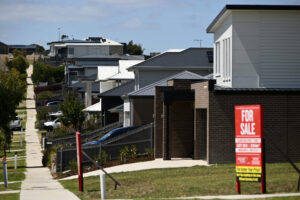by Richard Deniss
[Originally published in the Australian Financial Review, 11 May 2020]
Would you prefer to double your salary or to double the rate at which it will grow in the next few years? Personally, I would rather a high-income that’s growing slowly. But the Morrison Government is telling anyone that will listen that we shouldn’t focus on the 10 percent reduction in national income headed our way because that lower income will ‘snap back’ soon.
The Reserve Bank of Australia (RBA) is forecasting around 10 percent hit to GDP by June and, optimistically, that the rate of GDP growth will surge to over six percent for the next two years. If all that pans out, we’ll be back to where we were in two years’ time. Isn’t that something to look forward to!
To put the expected 10 percent collapse in GDP into perspective, the 1991 recession saw GDP fall by 1.4 percent, and it still took 12 months before the economy was back to where it started. Despite the fact we’re now preparing for a fall seven times deeper than the 1991 shock, the RBA says it will take less than two years to recover from it–if you assume that GDP will grow at over six percent for two years. It is heroic stuff, given the economy has grown at 2.5 percent since the Coalition won in 2013.
While it’s likely GDP growth will spike in September, when firms that have been producing nothing start to produce something, both economic history and theory suggest it’s unlikely that any surge will be maintained. But regardless of history or theory, the main macroeconomic models literally assume that the deeper any recession we endure is, the stronger the recovery will be.
The RBA’s MARTIN model (which stands for MAcroeconomic Relationships for Targeting INflation) proudly describes how its ‘error correction’ architecture provides ‘stable long run properties’. But if anyone really believed that deep recessions cause strong recoveries then there would be no reason to speed up the reopening of the economy. If deep recessions cause strong recoveries, then we should simply wait till the health threat has passed.
In reality, deep recessions don’t cause strong recoveries, they cause long lasting pain. The Australian economy was struggling before it crashed into COVID-19. Surely no one really believes that a compulsory shutdown of large sections of the economy was just the tonic needed to drive the rate of growth of GDP to double its long run trend?
With more than 1 million unemployed people in Australia, does anyone truly think that wage growth or consumer spending will soon drive six percent GDP growth? Or does anyone think our exports are set to surge into a shrinking world economy with no international tourism?
What about private sector investment? Again, it is the level of economic activity that matters most, not its rate of growth. So if the level of GDP in Australia is going to be below its 2019 peak for at least two years why would most firms invest in expanding their production capacity?
The Morrison Government’s early response to the medical dimensions of COVID-19 was poorly communicated but well implemented. And while their early economic messages were well communicated their stimulus policy has been both slow and inadequate.
The Australian economy doesn’t need temporary and targeted stimulus while it waits for the economy to ‘snap back’. It needs a sustained and structural shift in public spending to drag the economy back from the deepest hole it has ever been in.
If wages, consumer spending, population growth and export demand aren’t likely to boost GDP in the second half of 2020 then the only possible driver of growth is the public sector which, by the way, was the only thing driving growth back in 2019. Despite talking like a Keynesian early on, Josh Frydenberg is not acting like one when he doubles down on his determination to cut public spending in the second half of this year.
Economic modellers can assume the economy has some built in ‘error correcting architecture’, and politicians can assure us that the rate of growth will ‘snap back’ soon, but assumptions and percentage changes don’t pay the bills or drive private sector investment. In the absence of a consumer-led recovery or an export led-recovery the only option is a government-led recovery. That won’t be cheap to fund or easy for some to swallow but, apart from hope, it’s the only option going.
Between the Lines Newsletter
The biggest stories and the best analysis from the team at the Australia Institute, delivered to your inbox every fortnight.
You might also like
5 ways and 63 billion reasons to improve Australia’s tax system
With a federal election just around the corner, new analysis from The Australia Institute reveals 63 billion reasons why our next Parliament should improve the nation’s tax system.
Business groups want the government to overhaul the tax system? Excellent – we have some ideas.
The landslide win by the ALP has seen business groups come out demanding the government listen to their demands despite having provided them no support, and plenty of opposition, over the past 3 years.
The housing crisis is turning into an inequality crisis
The rising concentration of property and investment assets in the hands of wealthier Australians is making housing crisis worse and deepening economic divides.



